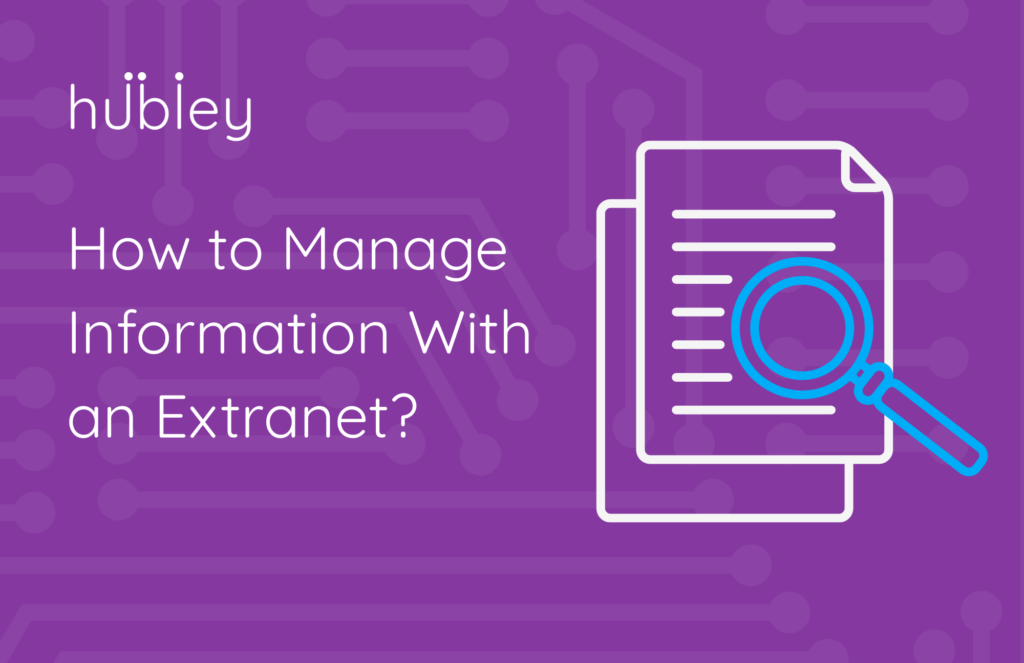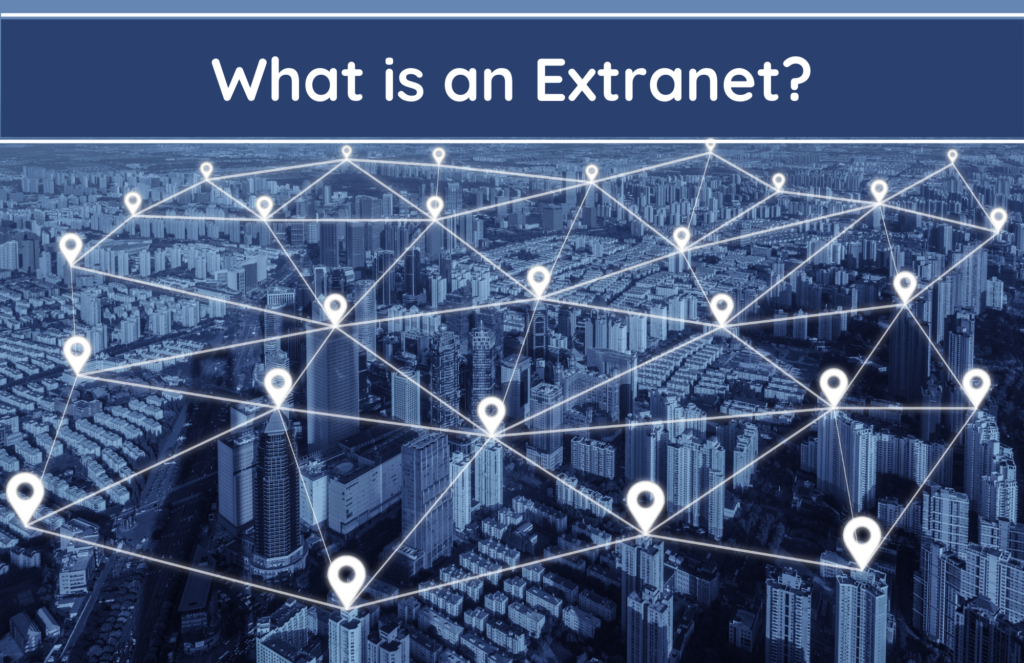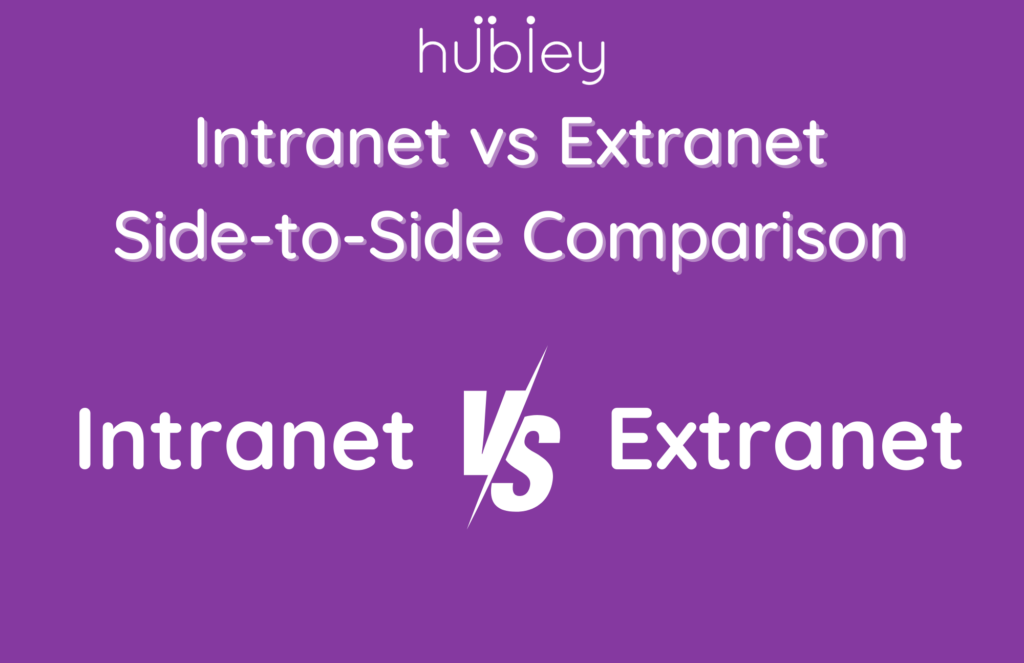Do you need a more efficient way to communicate with external stakeholders and stay connected to remote or hybrid teams? If so, it may be time to invest in an extranet. A modern extranet solution simplifies information management and allows you to communicate with stakeholders in real-time. Here’s everything you need to know.
What Is an Extranet?
An extranet is a private network that provides external users with controlled access. It allows you and your employees to share information and communicate securely.
When setting up your extranet workflows, you can grant the following users access to the network:
- Remote employees
- External partners
- Customers
- Retailers
- Business partners
Think about all of the different business processes that involve external stakeholders. An extranet grants these parties limited access to business information and promotes inter-organizational project management.
Let’s say you’re collaborating with a marketing agency to expand your company’s reach and generate new business. Your internal marketing team could use an extranet’s collaboration tools to work on joint projects within a secure digital workspace. The result is improved efficiency and better campaign outcomes.
Key Features of an Extranet
Extranets expand on the capabilities of internal networks and include special tools designed to promote collaboration with external entities. Some of the features to look for in an extranet include the following:
- Secure Access Controls: Adjust user permissions to control who can view or edit information
- Document Management: Simplify file sharing and document management
- Collaboration Tools: Unlock features like real-time messaging and video conferencing to keep everyone on the same page
- Integration with Business Applications: Many extranets seamlessly integrate with CRM, ERP, and HR software
- Security: Promote data security with firewalls and other security measures
Companies use extranets with these capabilities to support their business goals and tear down communication barriers between stakeholders.
Intranet vs. Extranet
If your business already has an intranet, you may wonder if it would also benefit from an extranet. First, you must differentiate between intranets and extranets to make that decision.
An intranet is a private local network exclusively for internal employees. It provides secure access to sensitive data and business resources but is separated from the outside world.
An extranet is also a private network. However, outside parties can access parts of your network, and different external parties have varying degrees of access.
For example, business partners within your supply chain may have access to product information, and customers may have access to payment portals or contact information for the support team.
Think of an extranet as an extension of your intranet. It has more complex access control and security features, allowing it to authenticate and share information with authorized users.
How Do Businesses Use Extranets to Manage Information?
There are many practical ways to use an extranet to manage information and support your business goals. Here are some top use cases for extranets:
Promote Secure Collaboration With External Stakeholders
Your business works with external stakeholders for supply chain management, IT projects, marketing, and more. An extranet allows you to communicate with distributors and other business partners in a secure environment. Partners can collaborate without compromising internal data security.
For example, healthcare organizations often need to communicate with insurance companies, diagnostic labs, and third-party vendors. An extranet allows healthcare employees to share information with these stakeholders while ensuring compliance with HIPAA and other relevant laws.
Streamline Vendor and Supplier Interactions
Even minor communication delays with your vendors can lead to friction and supply chain disruptions. An extranet allows you to provide vendors with access to order details, inventory levels, and other relevant information.
This limited access helps promote better external and internal communication, reducing the risk that your business will experience inventory challenges.
Improving your interactions with suppliers can also promote long-term partnerships. Positioning your business as responsive and efficient will help you negotiate more favorable terms with vendors.
Stay Connected With Remote Teams
Remote and hybrid workers can sometimes feel disconnected from workplace culture. While conferencing tools like Microsoft Teams help draw remote workers back in, these solutions alone are not enough to create a cohesive employee experience.
However, when you integrate those tools into a dynamic extranet, you can make remote employees feel reintegrated into company culture. They can easily connect with external stakeholders, coworkers, and vendors. This capability makes them more efficient and productive while also creating a sense of connection to the business.
Manage Projects and Promote Collaboration
Managing projects that involve multiple departments can be challenging, mainly when everyone works on different platforms. When adding external stakeholders to the mix, the situation becomes a logistical nightmare.
An extranet eliminates many challenges by allowing internal and external stakeholders to collaborate on the same platform. Participants can exchange documents, communicate, and collaborate toward common goals.
Removing barriers to collaboration improves project outcomes and gives the business a competitive edge.
Protect Sensitive Information
Sending documents through email can be risky. Companies use extranets as an alternative for securely sharing large files. Users have role-based access, ensuring only authorized users can download or edit sensitive documents.
Protecting sensitive information is crucial for compliance, especially in highly regulated industries such as healthcare and finance. Businesses safeguarding customer data also preserve their reputations and reduce the risk of significant disruptions. An extranet supports these goals while also preventing data silos.
Share Knowledge and Disseminate Training Content
Leading extranets also include content management capabilities, making it easy to organize your documents. You can track files and manage file versions, ensuring your team members use the most up-to-date version of essential forms and business documents.
Extranets are also great for disseminating training content. For example, you can share training resources with remote teams or contractors. Similarly, an extranet allows sharing brand guidelines and content creation instructions with third-party stakeholders.
What Is the Benefit of an Extranet?
There are plenty of advantages to consider. An extranet offers the following business benefits.
Enhanced Security
The basic premise of an intranet makes perfect sense. You create a secure local network for employees to access sensitive information and productivity tools. Sometimes, you must share those files and tools with third-party stakeholders.
An extranet builds on the value of an intranet while granting limited, controlled access to authorized users. You choose which third parties can access which documents and tools. This control makes it easy to promote security without isolating helpful information from business partners.
Improved Collaboration
You thoroughly vet every vendor and trade partner. You wouldn’t be working with them if you didn’t trust them. An extranet helps you make the most of these strategic partnerships by promoting real-time digital collaboration in a virtual workspace.
Improving collaboration is critical to achieving both short and long-term business goals. You can improve collaboration with everyone, from your IT services provider to your marketing agency and suppliers.
Take a moment to think about some of your most important business relationships. Which partnerships would benefit most from a shared digital workspace? As you explore extranet solutions, focus on improving those relationships to make your business more efficient.
Increased Efficiency
Data silos and communication barriers slow down your business. These inefficiencies can lead to missed deadlines and overspending. In some cases, friction in your workflows can negatively impact the customer experience and damage your brand image.
Extranets remove these stumbling blocks as you work to make your business more efficient. You can share information faster and reduce the risk of miscommunication. Additionally, your most trusted vendor partners will have access to the tools and information they need to fulfill your business agreements.
Cost Savings
Extranets are also great cost-saving tools. You can unlock various direct and indirect cost savings by implementing an extranet. Some of the direct cost savings benefits include:
- Reducing paper consumption
- Cutting administrative overhead
- Eliminating redundant data entry
- Decreasing labor costs
Secondary savings may include improved efficiency and a reduced risk of missed deadlines. Secure document sharing could also lower IT costs by centralizing access to essential data. These are just a few ways an extranet could save your business money.
Does Your Business Need an Extranet?
Your business may benefit from an extranet for leadership in the following ways:
- Manages a remote or hybrid team
- Frequently collaborates with external partners
- Needs a secure way of sharing information with clients or vendors
- Wants to expand the capabilities of an existing intranet
Identify workflows and use cases for an extranet. The right platform could significantly improve your organization’s resilience and promote better collaboration with various third-party entities.









